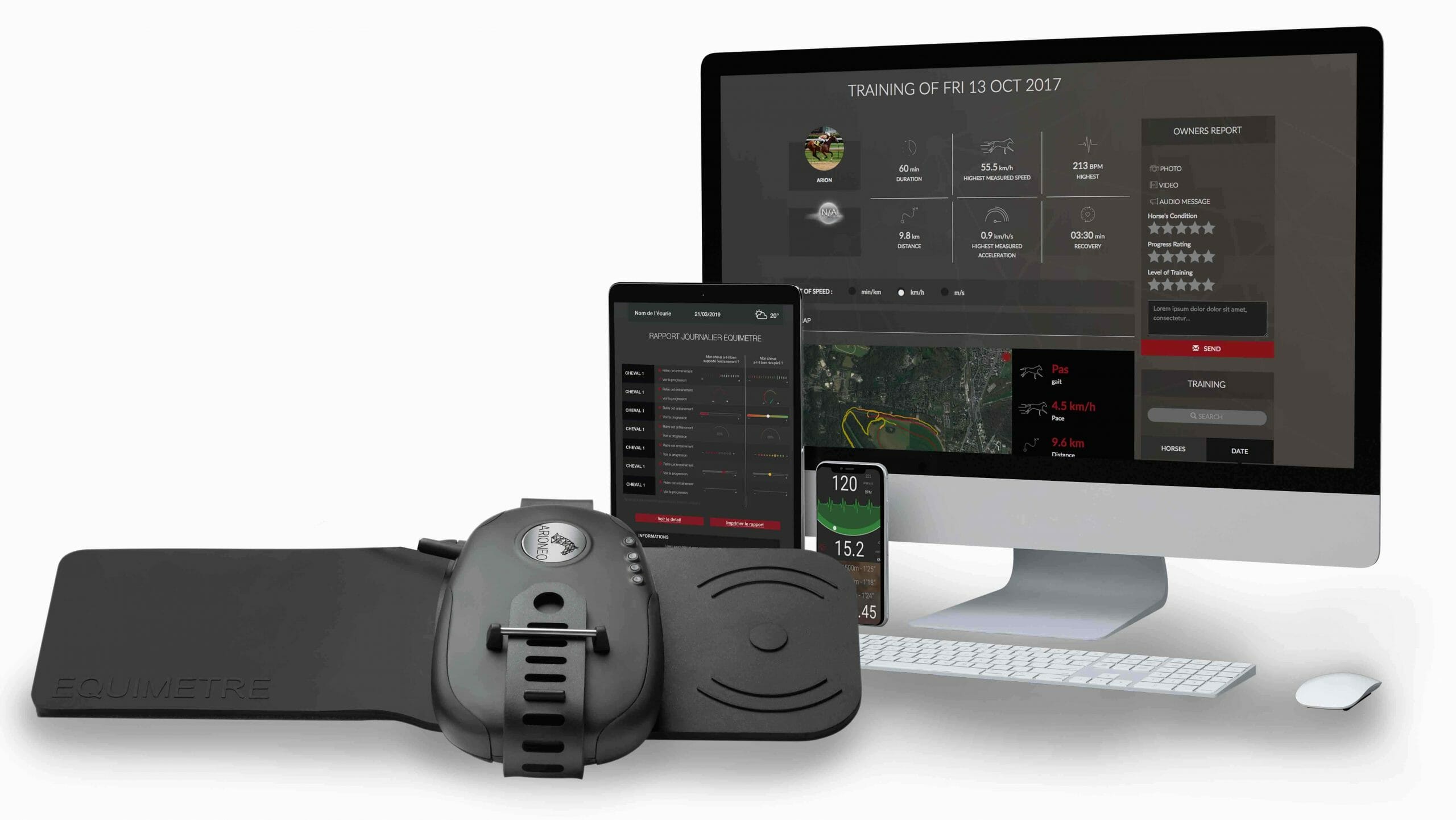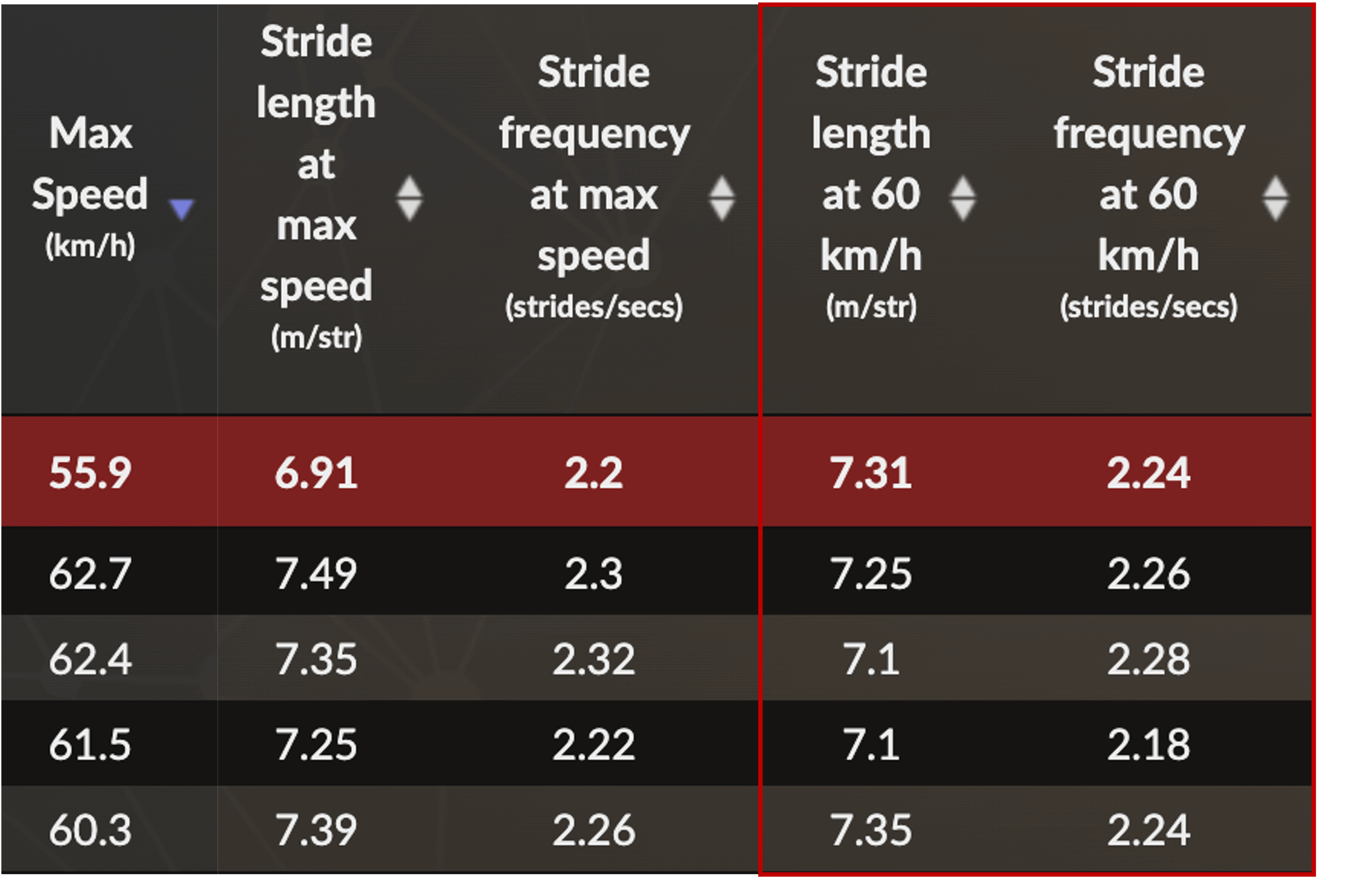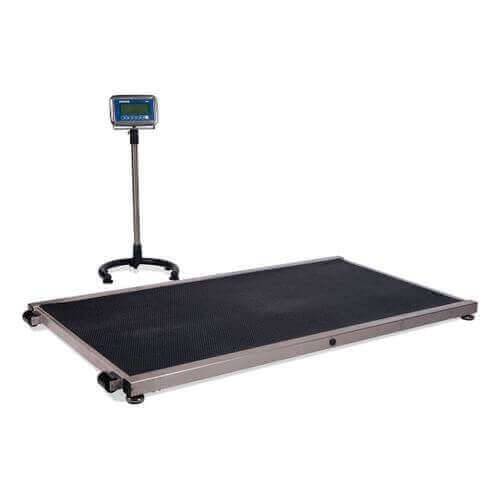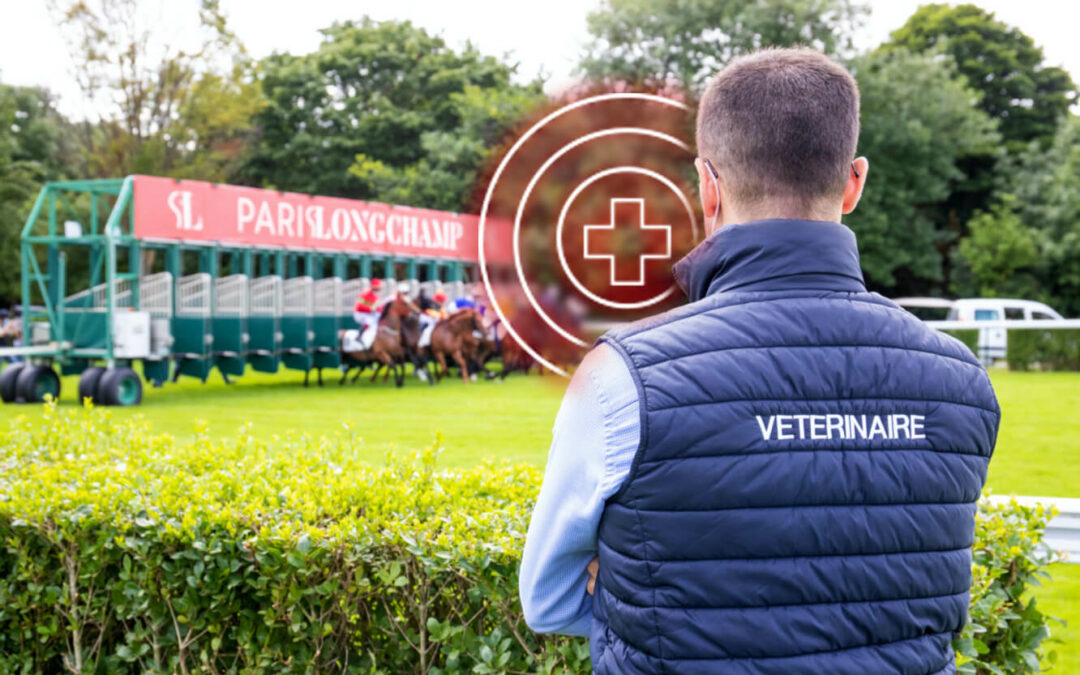The athletic horse’s medical follow-up is an especially intriguing tool to implement within a high-level stable. The athletic horse’s preparation is complex and includes a set of parameters: physical, cardiovascular, and muscular preparation (with the development of muscle mass). It is a long road to succeed in bringing a horse to its maximum potential while respecting its physical integrity. Some simple actions, performed on a daily basis, contribute to the implementation of the horse’s sports follow-up. In this article, you will discover why it may be interesting to implement it, as well as some recommendations to optimize its implementation.
The definition of medical follow-up in the athletic horse
We can theoretically define the medical follow-up of the horse as the permanent investment of a veterinarian in a sports stable. The horses in the stable are trained by the trainer (in a racing stable) or by a professional rider (in a sports stable). These professionals must provide quality training, adapted to each horse, so that the latter can achieve its goals.
Sports medicine plays an active role at all stages of a horse’s sporting life. It helps to evaluate the athlete’s physical capacity through frequent check-ups, which leads to designing training programs tailored to each horse and ensuring that they are adequately supported by the horse.
Why set up a medical follow-up of your horses?
1. To measure the effects of training
Training induces a series of transformations in the equine body that are essential to sports practice. These transformations can have both positive and negative effects.
Among the positive effects we can mention:
- The different adaptations of the cardiovascular, respiratory and muscular systems, etc.
- Learning the technical gesture
- Management of the intensity and duration of the effort
Among the negative effects, we can mention:
- The appearance of musculo-tendinous micro-lesions
- Locomotor problems
- Stress and inflammation
The balance between under-training and over-training can be difficult to find. Every horse is different. Training that is appropriate for one horse may cause lameness in another.
The first interest in monitoring the sport of equine athletes lies in verifying the effects of training:
- Is your horse progressing as expected?
- Is the horse ready for his competition?
- Is it necessary to adapt the training?
2. Clinical conditions are both preventable and detectable
The second goal of medical follow-up is the establishment of preventative measures. By frequently monitoring your horses, your veterinarian gains a deeper understanding of each of them and may thus spot some clinical illnesses more readily and early. When the initial symptoms arise, the problem is handled upstream, and the horse is swiftly taken care of in order to be treated. Furthermore, training measurement allows for better workload control, making it easier for the trainer to adjust the degree of activity during treatment. Micro-injuries, for example, can be detected even though the horse has not yet become disabled. For example, it is quite possible to detect micro-injuries that have not yet caused the horse to become disabled. You can then treat them and give the horse a few days off to recover and resume more intense activity once healed.
3. Avoid overtraining and accidents
Finally, by combining the measurement of training efficiency with medical prevention work, the risks of overtraining and accidents should be greatly reduced. These events are the most damaging to a horse’s sporting career.
2. How should this daily monitoring be set up?
1. Daily follow-up
Although medical-sports follow-up involves the veterinarian, there are actions that trainers and riders are able to carry out on a daily and weekly basis.
Analyze the behavioral condition
An equine’s behavioral condition reveals a lot about its mental and physical health. It may be evaluated both at rest and during activity. To carry out this monitoring, we can assess the horse’s interest in its surroundings, mood, hunger, behavior with humans and other horses, and so on. Detecting an overtrained horse from blood markers is difficult since it does not always create specific biochemical changes. As a result, psychological factors can identify it.
The physical signals of overtraining to be monitored are:
- Anorexia
- Depression
- Irritability
- Reluctance to work
Taking body temperature
Temperature is an important indicator of the horse’s health. The recent rhinopharyngitis outbreak that shook the jumping worldwide in 2021 has led towards the utilisation of temperature taking as a precautionary measure.
Temperature is a warning indication for numerous illnesses, as well as information on the horse’s reaction to external pressures (such as stress during exercise or competition).
It’s interesting to take it every morning to build a baseline for each horse. If the temperature suddenly shifts, you’ll be able to spot a change.
Examine gait locomotion
Lameness is the primary cause of a pause in the athletic horse’s training. Successfully detecting the problem as early as possible is one of the main issues in training follow-up. It also allows for the treatment and follow-up of a known pathology.
Stride examination can be performed before, after, or the day after a major session or competition. This will ensure that the intense effort has not caused any degradation of locomotion.
Monitoring heart rate during exertion, recovery, and relaxation
The heart rate is a great fitness indicator. It is an excellent approach to detect all sorts of irregularities as soon as they occur: infection, inflammation, discomfort, stress…
In order to interpret this data, several scientific investigations have developed reference values based on disciplines.
How can you quantify it?
To measure it at rest and during activity, you’ll need a connected sensor (like Equimetre). Once the data has been collected, you can evaluate it and discuss it with your veterinarian if you suspect an unusual.

The heart rate increases linearly with speed until it reaches the maximum heart rate. As a result, as speed decreases, heart rate should follow suit and decrease over time.
➡️ To learn more, we invite you to read our article, 5 Keys to Heart Rate Analysis.
Set up a standardized effort test
An exercise test is a method to assess a horse’s working capability by evaluating its response to training. Trainers and riders can adapt their training programs based on the test findings.
You may design an exercise test specifically for your horses in consultation with your veterinarian. To be able to compare the results of one test to another, they must be totally standardized, i.e. performed under the same conditions each time: speed, climatic conditions, duration, rider, and all other characteristics must be comparable.
Tracking your horses’ weight
Although rarely digitized, weight data allows the trainer and rider to identify the fitness weight of their horses more accurately, in addition to visual assessment. Once defined, the fitness weight is the optimal weight to achieve during a period of sport performance. For example, for a horse that is returning to training, this data helps to recalibrate the schedule and ensure the effectiveness of the training. Conversely, detecting early weight loss can limit the risk of overtraining and therefore possible injuries. Finally, another interest of weighing your horse regularly is to quantify the impact of the competition on the body, and to make sure that he recovers well.
It is recommended to weigh the horse before, just after and after the recovery phase of a competition. The horse should return to its normal weight shortly after the event. In the athletic horse, maximum exercise induces severe dehydration, which can cause the athlete to lose up to 20 kg of weight. The recovery time (usually between 3 and 9 days) of the weight after a competition is an important element of the medical-sports follow-up.
2. Tools to optimize the daily implementation of this monitoring
Measurements to be taken at rest: heart rate, weight, temperature
How to measure them? With a thermometer, a heart rate monitor, and a scale. Nowadays, there are more and more well-built tools adapted to the constraints of the field, allowing us to centralize all this information within the same platform.
Exercise parameters: heart rate, speed, locomotion, average work distance, average speed, max speed, etc., workload, recovery time etc.

Heart rate monitor
Measuring a racehorse’s heart rate provides information on his fitness level and adaptation to training. A heart rate monitor is a monitoring device that measures/displays the heart rate and records it for later analysis.

Locomotion quantification tool
It is possible to evaluate the general health of a horse by analyzing the way he moves. Locomotion quantification systems allow to store different locomotion examinations over time and thus have an objective and quantified memory of the previous examinations performed.

Scale
The scale allows you to weigh your horses. It is the perfect tool to control and follow the weight curve and the health of your horses.
3. Additional medical examinations
Of course, in addition to this daily follow-up, it is essential to involve the veterinarian on a frequent basis in order to carry out complementary examinations.
Blood tests
Training changes several blood parameters, and this is one of the most common tests in sports medicine. Usually performed at the beginning of the season, a blood test collects baseline values before training and the season begins again. It is important to have a blood test before each major event so that you do not enter a horse that is not healthy enough to perform. During the season, taking new blood tests after an intense exercise or a competition allows us to evaluate the response of the horse’s organism to the intense effort, and to know if it is necessary to adapt the work.
Lactate measurement during an exercise test
The purpose of this medical test is to stimulate the organism more than during basic training but without reaching the level of competitiveness to analyze a variety of physiological indicators. It is done on horses that have previously been trained and are virtually ready to compete.
➡️ We recommend reading this article to understand more about the exercise test.
Conclusion
Of course, other medical examinations can be performed according to the needs of everyone. This article does not attempt to propose an exhaustive list of examinations to be done in order to set up the medical-sports follow-up but provides you with some good practices.
As you can see, the key words in this article are adaptation and prevention. Many factors influence the performance of your horses, and medical follow-up is undoubtedly one of the most important.
Creating a medical-sports follow-up plan for the horse athlete is as follows:
- Ensuring that the horse can withstand the stresses of training
- Preventing the risk of injury
- Treating and monitoring the evolution of a clinical condition
- Adapting the training
- Preserving the horse’s health
Bibliography
Galloux, P., & Goupil, X. (2022). Le suivi de la récupération après une compétition. https://equipedia.ifce.fr/equitation/disciplines-olympiques/planification-de-lentrainement/suivi-de-la-recuperation-apres-une-competition
Robert, C. (2021). Suivi médico-sportif du cheval à l’entraînement. In Suivi médico-sportif du cheval à l’entraînement. IFCE. Retrieved from https://www.ifce.fr/ifce/connaissances/webconferences/autres-activites-equestres/suivi-medico-sportif-du-cheval-a-l-entrainement/
Keywords: medical-sports follow-up of the horse, horse follow-up, horse health, combining performance and health, respecting limits, developing good practices, sports follow-up



